Table of Contents
Great outreach starts with a great list.
Indeed, you can have the most excellent content and writers who can craft fantastic personalized emails. However, if you get your list wrong, none of that will matter and you will be wasting your time. Getting to that right list involves two processes: discovery and qualification. Discovery is all about sourcing the right lists through the medium of your choice
 section 1:Introduction
section 1:Introduction section 2:Authority Measures
section 2:Authority Measures section 3:Content Relevance
section 3:Content Relevance section 4:Content Quality
section 4:Content Quality section 5:Sponsored Posts
section 5:Sponsored Posts section 6:Linking Behavior
section 6:Linking Behavior section 7:Author Name & Email
section 7:Author Name & Email section 8:Interaction History
section 8:Interaction History
section 1
Introduction
Great outreach starts with a great list.
Indeed, you can have the most excellent content and writers who can craft fantastic personalized emails. However, if you get your list wrong, none of that will matter and you will be wasting your time.
Getting to that right list involves two processes: discovery and qualification. Discovery is all about sourcing the right lists through the medium of your choice (often Google, but also media and content databases) using a combination of keywords and filters to find the right audience.
Qualification, on the other hand, refers to the stage in the process where you vet those discovered prospects to determine which will actually be a relevant, high value lead that can help you deliver on your goals.
Today, I’m going to cover the latter.
Truthfully, when evaluating what separates top performing outreach teams from their competitors, the biggest differentiators emerge in this step. They also predict performance in every other area of the outreach funnel.
That’s because investing the work in qualifying the sites makes all of those other elements of your outreach workflow dramatically easier.
Want to make sure you’re spending time crafting emails on the right prospects?
Want to know what templates and messaging are going to resonate with a particular segment of your audience?
Want to ensure excellent email deliverability, open rates, replies and promotion?
The answers all stem from effective qualification.
Now, I want to give a comprehensive overview of the qualification criteria that will ensure you get to that top tier list. That means I’m going to go deep in a lot of areas, some of which may seem more obvious to you than others. The sheer criteria may also seem overwhelming at first.
This is by design. I want you to be able to leverage this guide to get back to fundamentals, get started with a high level qualification process, or hand it off to teammates who aren’t quite sure what a good prospect looks like yet.
And then I suspect it will become second nature and you’ll be able to pick up on most of these elements at a glance.
I’ll say this: if you follow this guide then you will have a list that will be incredibly responsive to your outreach and will deliver real value.
In any case, if you already feel comfortable with any of these criteria feel free to skip around. It won’t hurt my feelings. Much.
section 2
Authority Measure
Authority is one of the most critical metrics when attempting to go after authoritative links (obviously). Among other things, authority signals the link value that you’ll get from a site that links to you. In general, a high authority site will provide a greater boost in ranking than a lower authority site.
The biggest question you’ve got to answer when looking at authority measures is:
Which authority measure should you use?
To answer the first question, let’s take a look at two of the most popular measures and a newcomer in order to compare and contrast the way they measure authority.
Moz Domain Authority – Domain Authority (often abbreviated to just “DA”) has been the industry standard for quite some time. Although there are now many other ways of measuring authority, that has led to wide support of this metric and it is often integrated into other products as a quick way to determine authority.
There are a few things to keep in mind about the way DA is measured when you are considering this metric:
- This is a proprietary metric based on data aggregated by the Moz link index. That means that, in an effort to replicate the way Google sees a site, Moz uses a variety of data points fed into a machine learning algorithm to get the score. Although this arguably generates a more realistic measure, it’s impossible to highlight specifically what impacts the score.
- DA is a comparative metric and is meant to be used as such. For example, if a site in a certain vertical were to automatically get a ton of new (valuable) links, it would not only increase the DA for that site, but would drop the DA of other sites. You should not look at this metric as a cross-industry standard metric, but rather view it on a campaign basis to determine what “good authority” is for your niche.
- The score is calculated on a logarithmic scale. That means that it is increasingly difficult to increase a site’s score as they break higher DA numbers (it’s much harder for a DA 10 site to move to DA 20 than for a DA 50 site to move to DA 60). You should keep in mind then that the score is not additive, so it’s incorrect to assume that getting a link from two DA 20 sites will bring you the same ranking benefit as one link from a DA 40 site.
How to use Domain Authority to score sites:
- Install the MozBar

- Google a relevant search term for the content you’re trying to promote

- Click the MozBar chrome extension while on the SERP

- Review the Moz overlay to look at the DA of the listed sites, visiting only those that meet or exceed your authority criteria

Ahrefs Domain Rating – Domain Rating (or DR) is another proprietary metric, this time from Ahrefs. Like DA, DR represents an attempt to mirror the way that Google views a site in order to give some clue as to the ranking benefit a link from that site will provide.
Obviously, this metric is based off of Ahrefs link index so one of the reasons that groups might prefer to use this score is if they prefer that index over their competitors. Having a single metric for all aspects of site analysis can obviously be very valuable.
That said, there are a few other elements to consider:
- Unlike Moz’s DA, Ahrefs is pretty up front about what goes into their metric. It’s all about the backlink profile of the sites that link (in effect, DR is fueled by the aggregate of other sites’ DR linking to them, which is calculated entirely off their backlink profile).
- DR is also a logarithmic measure, so again it gets increasingly harder to achieve a high DR as a site’s DR grows.
- One big difference in the way that these measures are calculated is the way it treats links from subdomains. Ahrefs has elected to remove the link value of a subdomains parent DR if it falls under the category of what they call “service root domains”. So, if you get a site from a “name.wordpress.com” blog, DA will will credit the “wordpress.com” parent URL when factoring their score, whereas DR will not.
How to use Domain Rating to score sites (this is going to look real familiar…):
- Install the SEO Toolbar from Ahrefs

- Google a relevant search term for the content you’re trying to promote

- Click the SEO Toolbar chrome extension while on the SERP

- Review the SEO Toolbar overlay to look at the DR of the listed sites, visiting only those that meet or exceed your authority criteria

Majestic Trust Flow and Citation Flow – Like Domain Authority and Domain Rating, Majestic’s metrics attempt to demonstrate the value of a link. However, they do so by breaking the components of a link into two different metrics: Trust Flow and Citation Flow.
Trust Flow is essentially a qualitative measure. In other words, a higher score means that the site receives higher authority links (or, in Majestic parlance, means that more authority flows from those higher links to the site in question).
Citation Flow on the other hand is a quantitative measure, meaning that it looks purely at the number of links to a page regardless of their authority.
In the app, these metrics are presented as a graph representing a given sites backlink profile, with Trust Flow on the Y axis (higher up means higher authority) and Citation Flow on the X axis (further right means more links). This offers a sort of heat map that you can use to get insight into a site.
Using Trust Flow and Citation Flow is not as straightforward as Domain Authority and Domain Rating, if only because it represents a two-axis authority rating. However, it arguably does give you better insight (particularly with the “Topical Trust Flow” metric, which breaks down authority in given categories).
There are some excellent guides out there on how to get your head around and use these metrics, so I’d recommend you check that out to really get a feel for whether they will work for you. However, assuming you know how to use the scores, it’s pretty easy to view them on any given page.
- Install the Majestic plugin on your browser of choice (as long as your browser of choice is Chrome or Firefox)

- Navigate to the page you want to qualify

- Click on the plugin from your browser
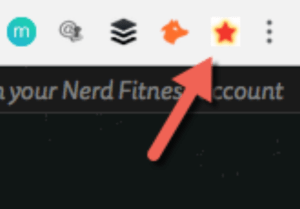
- Review the summary information, broken down by domain, root domain, and subdomain where applicable

So, how do you determine a good score!?
Well, like I said all authority is relative, so you’ll want to find some authoritative sites and use that to “grade” the range of authority using your metric of choice.
That said, here’s a good rule of thumb (using DA as a guide):
DA 20 or under: Don’t bother. These sites are certainly not necessarily bad (they may be fantastic up and coming blogs), but they’re not going to provide a good cost/benefit ratio for your outreach efforts.
DA 20-40: Decent sites that are good targets for high volume outreach campaigns (broken link building, resource pages and the like).
DA 40-70: These are sites with good authority that are great to reach out to about on page links, updating articles, and low-touch pitches.
DA 70+: These are usually major pubs and sites with top-tier influence in their community. It’s worth investing a lot of time here because each link will provide a significant boost in ranking and will also result in trickle-down links from other sites that link from high authority content.
This is a super high level overview that ignores a ton of nuance (and two of the three metrics I discussed), so let me know if you want me to cover this specific topic in more detail.
section 3
Content Relevance
Relevance is the most critical element of getting high authority links.
Put simply, if you’re not reaching out to people who you are 90% certain will be interested in hearing about your work, then you are wasting your time. Irrelevant outreach has numerous problems that I’ve expounded upon in the past, but suffice it to say you must get this right.
The most important element of finding relevant authors is understanding the valid angles that will be interesting to your outreach targets. This does not mean bending over backwards to make an angle work. I’ve seen teams go through all sorts of mental leaps to justify their outreach, but I can assure you that no matter how many mental hoops you jump through, it is impossible to successfully pitch a piece on dog training to journalists who cover travel trends.
And by the way, if you just took a moment to actually go through how you COULD do that, without thinking whether you SHOULD, you’ll realize just how insidious this problem can be 🙂
There is another side to this issue as well: often you will have difficulty getting responses if your content is TOO relevant.
Let me explain.
When somebody covers a piece of content about a specific topic, they are unlikely to cover or promote content about precisely that same topic. That is unless it’s been a while since they covered it, or the topic introduces a radically new angle.
For example, if a journalist has just covered the most common bad sleep habits, they will be unlikely to be interested in your infographic about “The Five Most Common Bad Sleep Habits”.
The best results will come from contacting prospects who operate in that happy area occupied by topics that are directly related to the content you’re promoting, but not spot on.
So, it pays to put together a framework around the relevant areas of interest before you begin prospecting and qualifying sites.
There are several ways you can go about doing this, many of which we’ve detailed in a previous post about building your lists. That said, one of the most efficient and direct ways is to build a few outreach target personas based on a handful of prospects that are known to be excellent candidates.
- Start by identifying 3-5 prospects in your niche that are directly relevant for your target. To be as on the nose as you can, I’d recommend trying out an advanced Google search using the “inurl:[topic]” or “intitle:[topic]” operators.
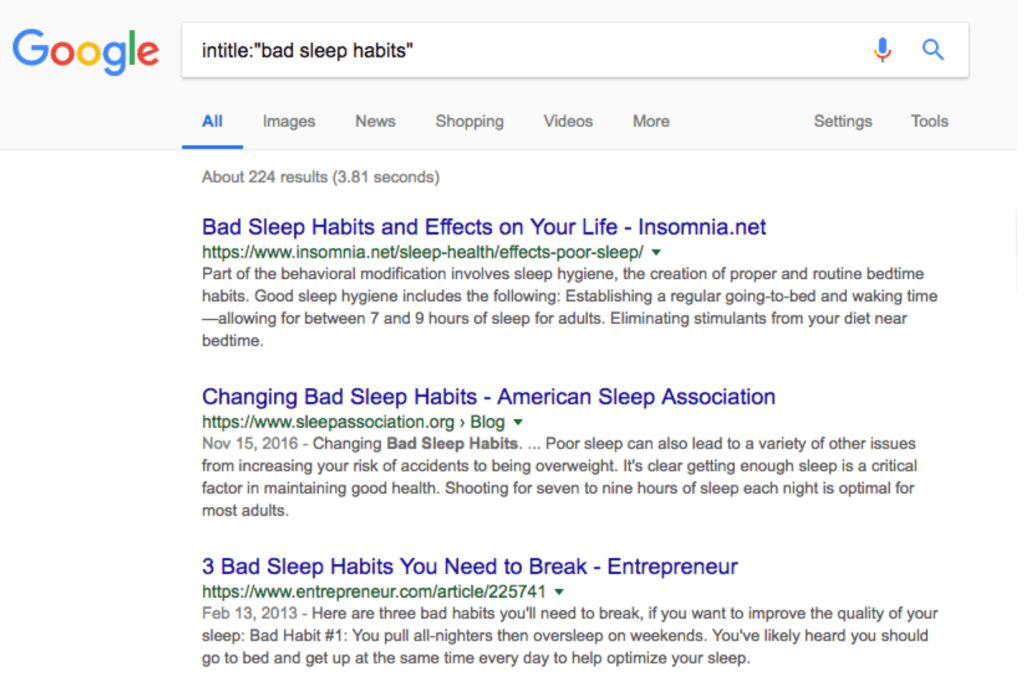
- Review the results and visit any sites that seem like they’d be an authoritative source for your chosen topic.

- Once you’ve found a site that is obviously very authoritative on your topic, you’re going to want to look for clues about related topics. In this example, I’ve found both related topics and related terms.

- Once you’ve gathered info on site suggested topics ( or if it’s not as neatly laid out for you), click on the author’s name in their byline to review all of the content they’ve written and note any recurring themes related to your content

- Now that you have your list of related terms, you can use those both to search for and qualify prospects that have covered those topics with a high degree of certainty that they will also perceive your outreach as relevant.
Time is another determining factor in the relevance equation.
Put simply, even if a publication has covered a topic in the past, if they haven’t talked about it for the past five years you’ve really got to question whether that’s something they’re still interested in.
Most of the time this is fairly straightforward.
- Just look at the post date on the page you’re qualifying.
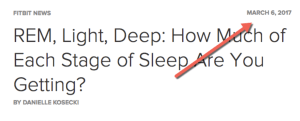
- If it’s not listed there, view the page source of the page you’re looking at and look for the words “date” or “update” to get a sense when the page was last interacted with. Note that sometimes a post will be updated much more recently than it was initially published, which can indicate that this is still a relevant topic even if the post is a bit older.

- If you can’t find that info there, try plugging the URL into Twitter to see when it was promoted to social or it started receiving the bulk of its audience engagement

Of course, you can also circumvent this need altogether if you filter by last post date in Google when you’re running your searches.
- In Google, just click on Tools

- Then click on the filter labeled “Any time”
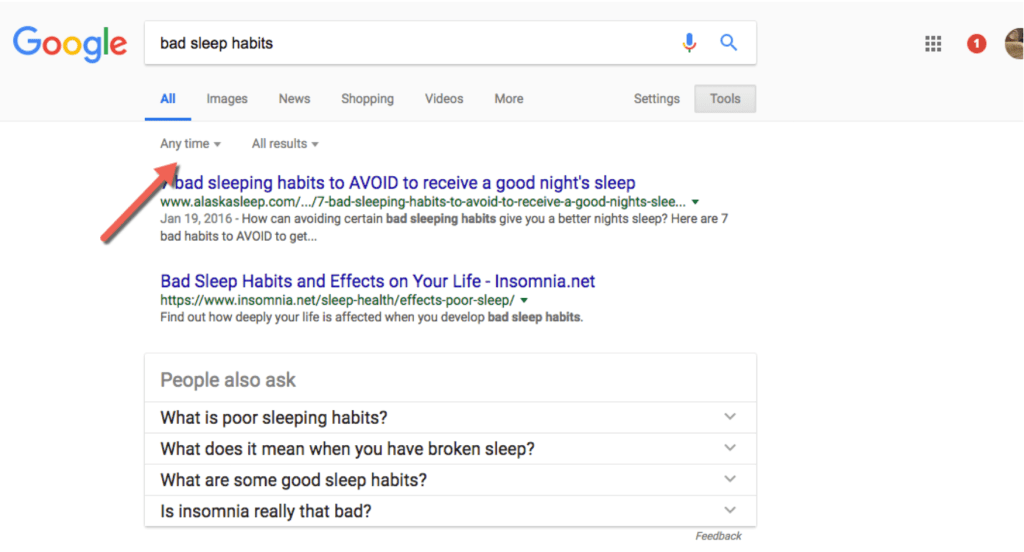
- Now, select an acceptable date range (generally if a site hasn’t discussed the topic in over a year the odds are good they aren’t that interested anymore)

- Now all of the results will have been published within the date range you specified
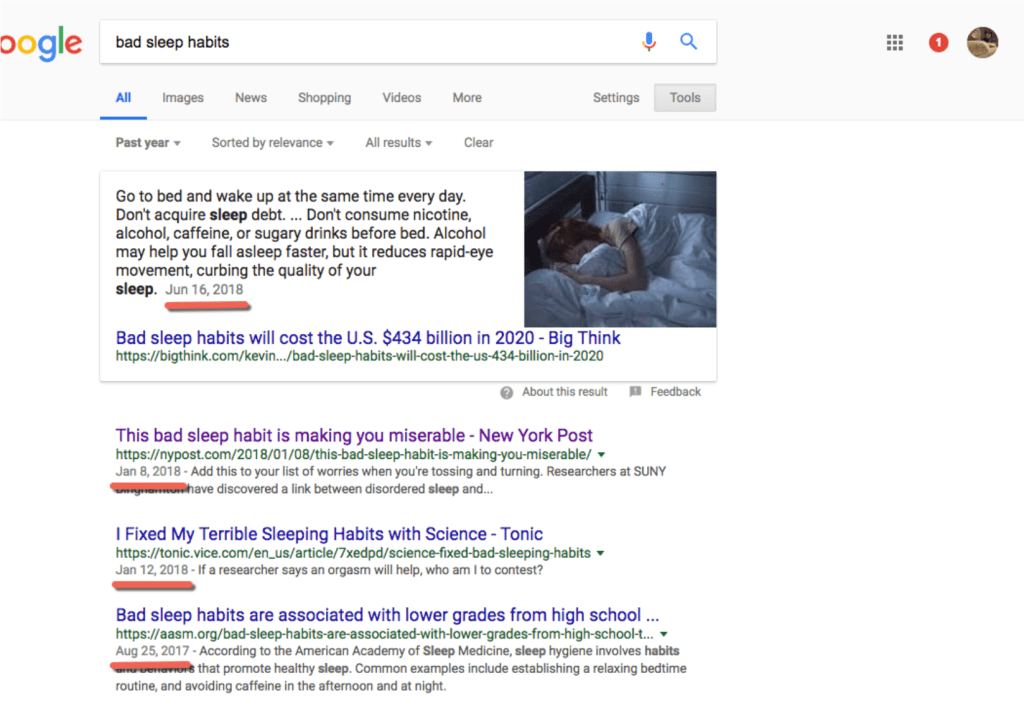
section 4
Content Quality
Quality of content is important from a qualification perspective insofar as it will impact the value of your rankings from the site.
Essentially, what you need to know is:
- Is the content authentic and valuable?
- Is there any indication of high risk practices associated with the content?
1. Review for thin content

Thin content is generally defined as content that creates little or no value for the searcher. If you’ve ever clicked a link about a topic you care about only to be greeted by a simplistic and obvious page created just to rank for a term, you’re already familiar with thin content.
Warning signs include:
- Cursory or very light information that does little more than provide a definition of a topic without providing any significant “meat” or details.
- Poorly written content that indicates it was thrown together quickly or outsourced to a team with little expertise (some indications that content has been farmed out are awkward language indicating it was written by a content farm or continuity issues/changes in tone indicating it was put together by a medley of freelancers with little thought put to edits).
- Extremely short content focused on a tight niche. Again, this indicates an attempt to game search engines for a keyword rather than provide insight into a specific subtopic.
2. Review relative to Google quality guidelines

If you’re not already familiar with the Google quality guidelines, do yourself a favor and read through those now. Since you’re almost certainly trying to rank in Google, you’ll want to know what THEY’RE looking for regarding quality.
Now that you’ve had a second to do that, I’ll call out a few of the specific areas you should review as you’re vetting content:
- Automatically generated content – if it seems like a human didn’t write the content you’re looking at, the odds are they didn’t. Similarly, if you see a lot of synonyms for terms or terms that seem shoehorned in so as to add keywords to a piece, you’re likely looking at auto-generated content.
- Sneaky redirects – if you see a link to a good looking article or page in a SERP and then get exposed to a page that looks unexpected, you’ll have caught a sneaky redirect. Pro tip: this is one of the major reasons you should actually visit the sites you intend to reach out to 🙂
- Scraped content – Sites that routinely scrape and republish content from other sites without adding additional value can be penalized by Google. So, if you visit a site with content that clearly isn’t original and doesn’t offer any sort of unique spin or additional info on the piece, you should steer clear.
- Link schemes – there are a ton of different link schemes. The most common you’ll encounter (or rather, will be able to encounter without a ton of additional research) are advertorials and over-optimized anchor text. If the page you’ve clicked on is clearly a paid advertisement in the guise of authentic content, that’s not a good target. If there is a ton of anchor text that is similar scattered throughout the article (lots of links from text like “london travel”, “travel to london” “traveling london”) then that should also be a major warning sign.
3. Review brand alignment

This last phase is difficult to define in general, because it obviously applies to the specifics of your (or your client’s) brand.
The biggest takeaway here should be: you need to get clarification up front on the following areas and make sure to adhere to that as closely as possible:
- Tonal alignment – does the content have a tone that matches with the brand you’re promoting? Maybe an author can get away with a ton of cursing, suggestive jokes, or edgy humor with their audience, but will it hurt your brand if you are associated?
- Aesthetic alignment – There’s probably quite a bit of leeway here, but you should make sure that the styles/imagery/presentation of the sites you’re reaching out to align with the associations you want made with your brand.
- Reputation – Does the site/author have a reputation that could prove injurious to your brand? If there’s any question, a quick Google search can pull up controversies surrounding a site or author so you can make the call whether their reputation will help or harm your brand.
4. Review on page advertisements

It’s not just the content and tone that matters, but also the advertisements and types of products or services offered, as well as their presentation, that can affect the perceived quality of a site. You’ll want to review for the following and determine whether it falls within an acceptable range for the brand you’re promoting:
- Do the featured advertisements seriously distract from the content, either because there are too many ads, pop-ups, or elements that otherwise make it difficult to access or enjoy the content?
- Does the site feature “gotcha” advertisements that attempt to deceive the reader into clicking? For example, is there a “download now” button that redirects to a third party site?
- Are there advertisements for products you wouldn’t want to be associated with (porn, male enhancement pills, miracle supplements, or get rich quick schemes)?
section 5
Sponsored Posts
Sponsored content, also referred to as native advertising, is increasingly common. Companies like it because it provides a more certain path to placements and visibility, and sites like it because it provides a direct revenue stream through content partnerships.
However, if you are performing organic outreach it can significantly change the types of strategies you’ll need to perform, and many brands will not be interested in “pay to play” sites that only post third party content in a sponsored content form.
Similarly, Google has specific guidelines around sponsored content that, if handled incorrectly, can result in penalties for the sites that post that content.
In any case, even if your brand is comfortable with (and has budget for) paid placements, you need to know if the content you’re reviewing has been sponsored so you can approach the site owner in a way that is appropriate to earning that sponsorship (read: they won’t be interested in a personalized pitch talking about the value of your content unless you’re also indicating a willingness to front that cash).
Fortunately, it’s fairly straightforward to identify whether content has been sponsored on a site by looking for a few things.
1. Sponsored post callouts

the most direct way to know if a post has been sponsored is to look for a callout. This will almost always be in the introduction, conclusion, or byline of a piece and will have language suggesting that the piece was paid for. Just to make this super obvious, I went through about 200 pieces of content and pulled out all the different callouts.
Those are:
- Ad content
- Advertisement
- Paid post
- Paid for
- Sponsored
- Sponsored by
- Sponsored content
- Sponsored post
- Sponsor content
- Sponsored collaboration
- Sponsor story
- Brought to you by
- Partner content
- Brand publisher
- Presented by
- Promoted by
It’s pretty simple to scan an article for these once you know what you’re looking for. In 99% of the cases It’s as simple as looking at the top of the article for one of these phrases (usually immediately above or below the title, or embedded in the intro to the post).
However, it is possible to automate this whole process if you’d like. One way to do this is using Scrapebox’s Page Scanner to create a footprint.
The process for this is really straightforward:
- Input the list of URL’s you want to scrape into the Page Scanner tool
- Create a footprint labeled “sponsored posts” or something similar
- Add the list of sponsored post callouts above
- Run the tool and it will label all of the content where that text was detected on the page
One major caveat to this: the tool is just looking for keywords, so it will falsely label things as a sponsored post if, for example, it uses the word “sponsored” on the page. In other words, for sites without the sponsored label, you can be confident they aren’t sponsored, but there may be some false positives in your list using this approach.
2. Sponsorship signals

There are some instances where a sponsored post will not be clearly called out. In that case, there are still common signals you can use to determine sponsorship.
- Products given for review – If there is an in-depth review of a product, look in the post to see if the product was provided by the company. Most reputable reviewers will call this out, and is a form of sponsorship regardless of whether additional payments were made in addition to the free product.
- Product giveaway – if a post features a product giveaway then this is also often a form of sponsorship. Look for information concerning what company provided the product being given away.
- Logos – If a piece of content features a business logo in the byline, intro or elsewhere that is clearly not associated with the parent site that’s a big clue it was sponsored. Most organic “guest post” style articles will feature an actual persons name/image/byline.
- Product photos – If the majority of photos in a post prominently feature the same product (or a group of products from a company) with the intent to highlight those products, that’s another good clue this post was sponsored.
- Product links – If numerous links in a post point to the same product or company there’s a good chance it was sponsored. Bonus points if those links are also given custom tracking codes!
- Advertisement page – If there is a page on a blog (often in the footer of the blog itself) titled “Advertisements” or “Sponsorships” odds are that this is a professional blogger who will usually be interested in payment for writing about a brand (shout out to Vince Nero for this tip).
section 6
Linking Behavior
As you’re vetting outreach prospects it can be incredibly helpful to understand their linking behavior so you’ll know whether the end goals for your campaign will be met. Knowing whether a site rarely link to third parties, or that only link to certain types or URLs, or only with nofollow links, can significantly impact the calculus as to whether or not it is worth your time to reach out to that prospect.
Armed with this knowledge, you can be much more confident that you’ll meet your campaign goals.
To get a good understanding of linking behavior you’ll need a tool like Ahrefs or Moz. It’s certainly possible to do this manually, but trust me when I say you won’t want to.
First, I’ll show you how to quickly view whether a site links to external sites with Dofollow links:
- Open the Mozbar on the page you’re qualifying

- Click the pencil icon to highlight links on the page
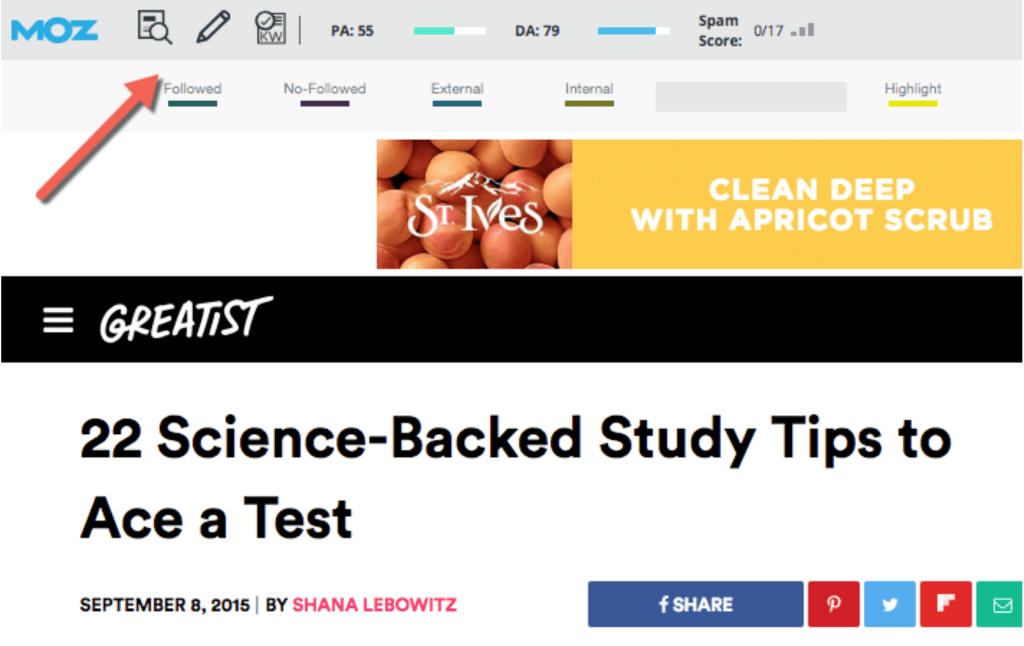
- Select External and Dofollow links to highlight

- Now, scroll through the page and review any highlighted links to see whether the site links externally with dofollow links, and what type of sites they link to that way

Next, I’ll show you how to handle this in Ahrefs:
- Grab the URL of the page you’re trying to qualify and plug that URL into the Ahrefs Site Explorer

- Click on “Linked domains” under “Outgoing links” in the left hand nav bar

- You’ll now be presented with a list of the domains that this page is linking to
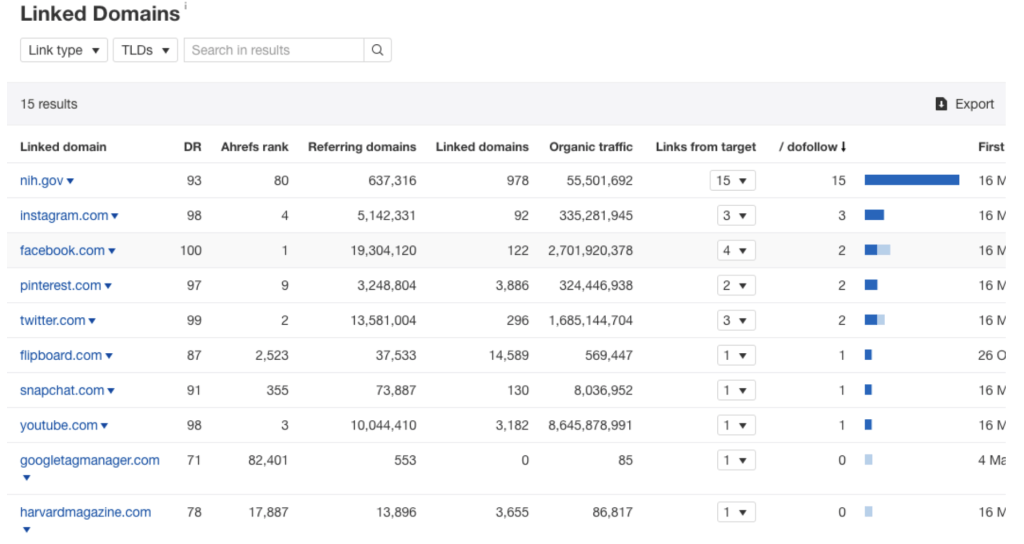
- First, review the domains on the page to understand whether the site links out to third parties
- In this example, you can easily see that because the only external links are to the site’s social channels, this would not be a good outreach target

- On the other hand, you can see that there’s a good mix of links here, and that they are linking to both .edu and .com domains, signaling that they link to good content from a variety of sources

- In this example, you can easily see that because the only external links are to the site’s social channels, this would not be a good outreach target
- Now, review whether the links on the page are dofollow or nofollow. If they are all nofollow, you should make the call as to whether a link from this site will provide the type of value you’re after (generally they’ll be good for general word of mouth and direct traffic but not good if you are going after rankings)

- You can take this one step further by visiting the sites that have received dofollow links to understand the type of content that this site appears interested in giving that type of link to and whether your content fits that model.
- One other element you’ll want to review for here is the DA/DR of sites they link out to. If you are a DA 20 site and they only link to DA 70+, the odds of you getting a link aren’t great.
- Finally, manually review the links on the page to get a sense of any other information that may be hidden. For instance, is there a competitor link? If so, does that indicate that they are willing to link to content in your niche, or that they have a deep relationship with that competitor?
Regardless of the process you use, you’ll also want to consider the author’s linking methodology (or “willingness to link”).
In other words, even with a mix of dofollow external links, you can determine receptivity to external link requests by putting yourself in the author’s mindset when looking at the types of links included on page.
Continuing with the example we’ve been using here, it seems fairly obvious that the author of this article on “acing a test” included most of their links in order to support their assertions and advice in the piece. In other words, links were included as a result of research rather than placements based on external link requests.
Looking for positive link receptivity signals can really help increase the results of your outreach, particularly if you are targeting links to specific pages. I’d suggest you check out this guide from Siege Media which covers positive link signals in detail.
section 7
Author Name & Email Address
Most of the qualification elements addressed thus far deal with how your content will be received. Getting these elements right dictate whether your content will be received, period.
In fact, when we were conducting research on outreach workflows, most of the top performers were willing to spend ten times the amount of time they’d otherwise spent researching a site in order to find this information.
That actually makes a lot of sense.
If you think of website research and qualification as a funnel, author name and email address are pretty far along it. In other words, much like in a sales cycle, once a site has been qualified you’ll want to invest quite a lot in making sure you reach the person most likely to provide benefit for you.
The other element we found when discussing workflow with top performers was the importance of reaching out to specific people versus generic site email addresses (tips@, info@, etc.).
Again, the reasoning behind this is fairly straightforward.
There is almost no way to build rapport or contextualize emails around author interests unless you know who that author is to begin with.
So, although it is admittedly not a hardline qualification element, you’ll get a dramatically better response rate if you’re reaching out to specific people.
The good news is finding the author’s name is usually as simple as checking the byline.
If there isn’t a byline for whatever reason, you’ve got a few other venues you can use to find that info.
The first path is through LinkedIn. Most journalists/editors at major pubs will have profiles there so you can review who to contact about a specific topic, article or beat.
- Visit LinkedIn and run a search for the site name you’re trying to contact

- Apply an advanced filter to look specifically for the current company people are working for

- Review the results to find the person connected with the topic you’d like to pitch

If you can’t find the person on LinkedIn, another great alternative is FollowerWonk (subsequent process stolen shamelessly from here).
- Go to FollowerWonk and get a free account if you don’t already have one

- Click on the “search bios” tab

- Change your search preference to “search bios only”

- Now search bios for the Twitter handle of the site/publication you’re targeting

- Review the results until you find the person most relevant for your topic

If those two approaches fail you can turn to the source code of the page you’re targeting. This is admittedly a pain in the ass, but it can turn up authors that have their name obscured on the site.
- Right click on the article
- Click “view page source”

- Scroll through the article, sometimes the author name will immediately jump out

- If not, run a text search (CTRL+F on Windows, COMMAND+F on Mac) and search for the following terms:
- “author”
- “By”

- Look at all of the areas where those terms appear in the source code to try and identify the author

Once you have the author’s name, you’ll want to leverage it to find their email address. A quick note here: people are often tempted to bypass email when it is too tricky to find, either going through contact forms or other outreach channels such as Twitter. I’m not saying going that path will never be successful, but you should only use those as a last resort. Contact forms are often a black hole, and over 90% of journalists prefer to be contacted through email.
In other words, it is well worth the time invested to find the right email address for the person you want to contact. Don’t think you can skip this and get good results.
Now, there are tons of resources online detailing how to find people’s email addresses. Personally, I think this one from Ahrefs does a fantastic job of giving a detailed breakdown of different methodologies.
Nevertheless, I’ll share a quick and easy process you can use to find emails with an 80% success rate.
- Review the author byline to see if they have list an email address there
- View the author’s page on the site to see if they list any specific contact information
- Check the “About Us”, “Team”, and “Contact” pages on the site
- If you can’t find it there, download the Hunter.io Chrome extension (it’s free to start using)

- Open the Hunter.io Chrome extension on the page where you’re trying to find author contact details

- Review the list of returned emails. If one of them matches the author on the page, you’re all set

- If that list doesn’t work, visit the Hunter.io site and navigate to the “Email Finder” tool

- Enter the name of the author and domain of the site in the tool

- If Hunter has found the email for that author, it will return it along with a list of sources

- If that still doesn’t work, you can try to verify the email address following the common pattern for site emails. First, open Hunter.io on the site again and review the most common email pattern.

- Now visit the Email Verifier tool on the Hunter.io site and enter the name of the author into the most common pattern (for example: firstname@site.com)

- Hunter will attempt to verify the email address and will let you know if it is successful

If all of that doesn’t work, you can potentially find the authors email address through Twitter.
- Identify the author’s Twitter handle (through their byline or going through the FollowerWonk process described earlier)
- Go to Twitter and run an advanced search

- In the advanced search fields, search “all of these words” for the phrase “email me” within the persons specific twitter handle

- Review the results and if they’ve had an exchange where they’ve offered someone their email you can grab it from there.

section 8
Interaction History
If you are a part of a team or manage campaigns for a variety of clients in related niches, then you must have visibility into your interaction history with prospects before you reach out to them.
There are three reasons for this:
- One of the reasons we see emails getting marked as spam is because teammates from the same organization step on each other’s toes and reach out to the same contact, making it seem as though they are just hammering them with related messages.
- Similarly, contacts that see messages coming from the same individual on behalf of different brands will suspect something fishy is going on.
- Finally, it’s important to be aware of positive prior interactions so you can leverage those in your outreach moving forward.
You can use BuzzStream to identify these interactions through a relatively simple process using our BuzzMarker tool.
- First, make sure that all of your teammates have connected their email address to BuzzStream so the platform can appropriately track outreach sent through their campaigns.
- Install the BuzzMarker if you haven’t yet
- When vetting a site, open the BuzzMarker chrome extension

- You’ll immediately be able to tell whether the contact is in BuzzStream. If they aren’t you’ll be able to add initial details. If they are, you’ll see their profile.

- If the contact is already in BuzzStream, click on the History section of the profile. Now you’ll be able to see past engagements from you or your team members so you’ll know whether or not it is appropriate to reach out to this contact.
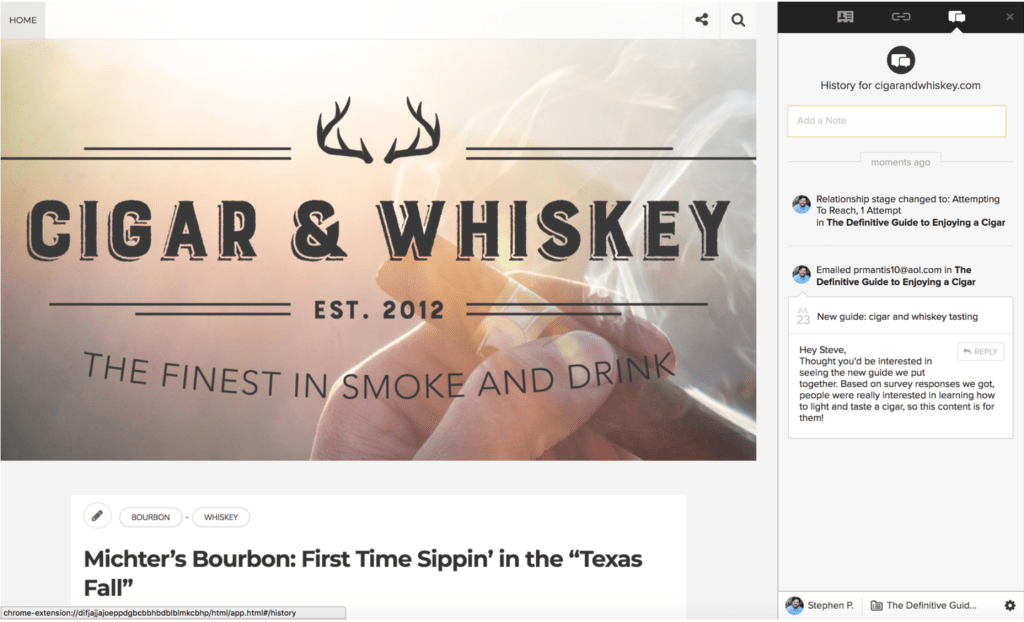
As a quick rule of thumb, it is appropriate to reach out to a contact you’ve already engaged with if one or more of the following criteria are met:
- Has it been a while since you or your team engaged with this contact?
- Were they contacted by your or a teammate on behalf of a different brand, using a different domain email address and/or point of contact?
- Are you using templates and wording that are distinct from any you or your teammate have previously sent?

Get Out There and Qualify
There you have it! Once you’ve leveraged these qualification criteria you’ll have an excellent list to reach out to.
My hope is that you’ll be able to keep this guide on hand and reference it when need be, so if you’ve got any questions, comments, or feel like I’m missing other criteria you find valuable please let me know in the comments.

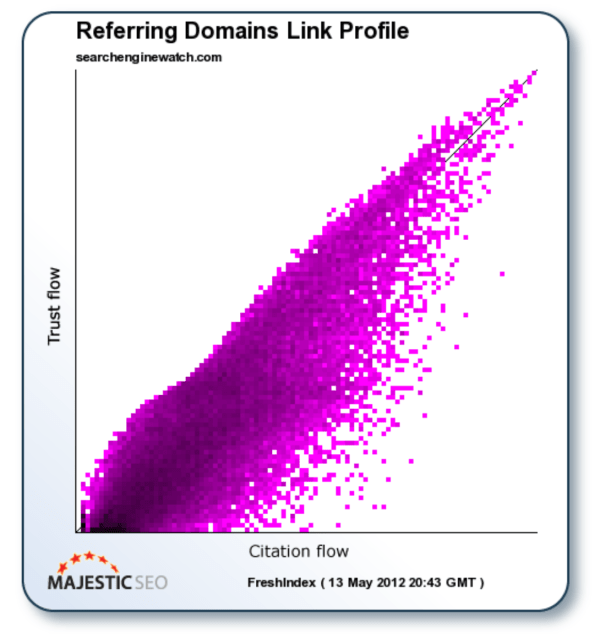

 Check out the BuzzStream Podcast
Check out the BuzzStream Podcast
